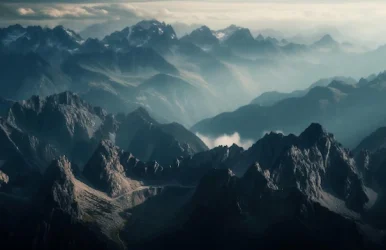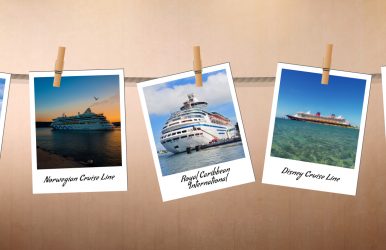❌ Generic Templates
❌ Limited Flexibility across Channels
These are the first two things you must leave behind if you are planning to start a travel blog these days. Also, it is now just about building a travel blog site, but the idea is to start a travel blog with a headless CMS and ensure optimized conversions.
Digital content endeavors to convert all the time, but it’s not enough to generate persuasive copy and aesthetically pleasing designs and leave it at that.
The ability to adjust, pivot quickly based on real-time metrics and a strategic push at the appropriate time during the buyer’s journey is essential.
Unfortunately, many CMS options fail to provide such access and flexibility. Yet a headless CMS allows for an in-depth design and the structure needed to create, experiment, and execute content intended for conversion across any channel.
With content modeling, an API-first approach, and componentized efforts, teams can design conversion-ready, optimized digital experiences along the way.
Here’s more on how we can have absolute control over content presentation and structure with the help of a headless CMS.
Why Conversion Is Limited In Legacy Content Systems?
Legacy content management systems (CMS) keep content tied to pages and templates. When a marketer wants to change the components or layouts, the messaging, or the targeting, it’s usually an impossibility.
Furthermore, content displays differently on mobile than on desktop, and unless developers are on board to change visibility across devices or channels, brands suffer from amateur impressions.
In addition, when small changes need to be made, it requires dev time, which prevents even the simplest, most timely turnaround pieces.
Thus, when marketers have access to A/B performance, they’re not always set up to make real-time changes.
Storyblok Labs product experiments showcase innovative ways to solve these limitations with faster, more flexible testing and deployment.
This is why conversion-centric content should be done as quickly and easily as possible. A headless CMS removes the content from the delivery, which allows for a more responsive experience.
Why Do I Need To Start A Travel Blog With A Headless CMS?
Creating content that converts doesn’t just rely on what you say. It relies upon how quickly and efficiently you say it, test, and iterate at every stage of the funnel.
When people can change their minds with the click of a button and attention spans are shorter by the second, the ability to create and implement content with flexibility has never been more paramount.
You can no longer just create a landing page and wait to see what happens; in modern marketing, everything must be iterated, personalized, and perfected in real time based upon performance feedback.
1. A Headless CMS Offers Flexibility And Helps Find A Brand Voice
A headless CMS provides the flexibility, framework, and agility necessary to produce content that advocates for high conversion rates with the ability to pivot just as quickly as your audience.
Because a headless CMS separates content from the front-end experience, both developers and marketers can create content modules that are highly reusable, each module attributable to a unique conversion goal.
You can test them with rapid A/B measurement campaigns. Moreover, you can easily assemble and deploy across all channels and touchpoints without upsetting the entire campaign plan.
The production time is cut down dramatically. Content silos are avoided. Compliance with best practices for brand voice and user experience becomes easier to control.
2. Ensures Better Assessment And Lesser Time For Content Production
With personalization opportunities driven by behavioral data, along with the flexibility of integration with A/B testing tools, analytics platforms, and CRM/log-in pathways, every piece of content becomes interactive, trackable, and meaningful.
Marketing teams can assess specific measurements for particular audience segments, remove underperforming pieces mid-campaign, and apply successful formulas across global regions and departments, all from the same source of management.
The possibilities for immediacy are especially valuable when it comes to major product debuts, last-minute holiday campaigns, or intense customer acquisition strategies.
Here, time is of the essence, and success depends on a failsafe launch at a selected moment. Being able to iterate while content goes live makes all the difference.
Within a headless CMS, your content machine is reactive to your business needs instead of responding to the consumer, continually changing, substantiating findings, and improving conversion attempts at every step.
Start A Travel Blog With A Headless CMS For Future Convenience And Use (Understanding The Technicalities)
A headless CMS supports the notion of creating content as fragments that can be used anywhere down the line.
For example, rather than creating hero banners and testimonial boxes, these “components” can instead be tagged as hero banners, testimonials, recommended features, CTAs, or pricing tables.
In addition, you can tag them with metadata for conversion. Mention who it’s for, what part of the funnel it serves, and what campaign it connects to.
So, it is like a content marketing workshop. You can assemble the essentials to meet the campaign goal by selecting the existing high-performing blocks of content.
It creates a greater quality assurance requirement and allows those approving the messaging to not deviate from branding and past successful communications.
The Benefits Of Using A Headless CMS For Travel Blogs
When you start a travel blog with a headless CMS, the blogs become your brand with personalized storytelling and picking the right sub-niche for your travel blog.
Thus, you build stronger connections with a specific reader base and establish authority quickly.
1. Personalization Drives Conversion Rates Up By Using A Headless CMS For A Travel Blog
Personalization drives conversion rates. Several different content pieces can be served based on segmentation data; thus, the same API connection can read geographic location or read CRM segmentation and serve a different headline, picture, or limited-time offer.
Thus, a new user can get one offer and a CTA. Furthemore, returning users can have a different CTA with various testimonials of their previous experience and industry.
A headless CMS makes it easier to let technology help people at scale with personalization that quickly drives them down the conversion path.
2. Iterating Quickly And Testing With Single Changes
There is no final design for conversion; it requires ongoing updates based on what works and what doesn’t. A headless CMS encourages rapid, modular designing that enables A/B testing or multivariate testing at the element level.
Marketers can test one element, a CTA, for example, or a product highlight against another product highlight to see which does better, and they can monitor the effectiveness in real time.
Because these elements are modular and exist apart from the overall design, they can be changed and adjusted without redoing an entire page or complicated experience. This allows marketers to pivot quickly and often for stronger conversions.
3. Minimizing Redundant Channel-Specific Content
Paths to conversion don’t just exist on websites; they exist in email, mobile apps, landing pages, digital ads, and more.
A headless CMS allows for omnichannel delivery from one content source, meaning that the message can be the same.
But because the content does not align with the design, you can update copy, style, and tone for each channel.
This decreases redundancy, increases content operations efficiency, and ensures that channel-specific experiences are as effective as possible to drive conversion.
4. Using An Integration With Analytics Sites To Drive Decisions About Content Elements
No effort to optimize large content pieces can be realized without performance data. A headless CMS integrates with analytics sites, A/B testing sites, and customer data platforms (CDP) to give teams the power to see how well certain pieces of content work on what channels and for what demographic segmentation.
Marketers can discover which elements of an ad drive clicks, what subheadings have reduced bounce rates, and which CTAs have the highest conversion rates.
These results go back to the elements in question. Thus, it allows you to make quick changes and more intelligent repurposing of popular content pieces. Over time, this creates a scalable library of assets that have all been assessed for conversion.
5. Easing Inter-Departmental Collaboration
Content that converts doesn’t just involve the marketing team. It requires insight from design, content, development, and analytics teams as well.
A headless CMS makes this process seamless by offering a content repository, in different formats, that allows everyone to contribute.
The marketers can make their piece of the puzzle for the larger campaign using out-of-the-box components. The designers can ensure a universal, consistent design across teams. Moreover, the developers can build a connected and responsive front end, no matter the content.
Distributing these efforts allows for faster flows, greater accuracy, and increased experimental, data-backed content conversion opportunities.
6. Enabling Scaling Efforts Without Quality Decrease
As brands grow, so do their campaigns and content needs for varied audiences. A headless CMS is intrinsically scalable, as it allows teams to replicate and pivot effective tactics from product to product and market to market.
Campaigns following templates and modules known to convert can easily be used for similar campaigns. Thus, the production time will go down.
Scaling is integral to maintaining conversion successes as it requires more resources over time.
Speedy and effortless digital experiences create conversions. If a webpage takes too long to load or has a disjointed layout riddled with out-of-date resources, potential converters become frustrated and return to search for better resources elsewhere.
With a headless CMS, developers have complete control over the front end to create fast-loading and mobile-responsive efforts that increase usability.
Moreover, with a modular approach, updates can occur in seconds, without concern for disconnected segments because of out-of-date information.
This speed and consistent access create credibility, one of the most important factors for turning interested parties into buyers.
8. Conversion-Focused Funnels By Modular Assembly Of Content
Perhaps the greatest advantage of a headless CMS is the unlimited ability to create hyper-targeted, conversion-based funnels based on specific buyer personas or short-term campaign needs.
When using a standard CMS, the content will be in silos based on general form templates.
Be it lead acquisition or collateral acquisition, email nurturing and lists, product nurturing or reactivation.
If creating a funnel exists within the marketer’s realm, they can specify how the content flow should happen to generate the desired response.
For example, if a product funnel is for converting cold traffic, you will use short-form copy, images, or overview videos to create the awareness phase.
The interest phase can be a compilation of FAQ blocks, testimonials, or lists of advantages.
The action phase can use product comparisons, expiring discounts, or friction-free lead gen forms, all pulled from pre-vetted and modular content blocks.
With a headless CMS, teams can be thoughtful and experimental about the funnels available to them.
One funnel does not have to serve all journeys. Instead, thoughtful, conversion-oriented experiences can be the way out based on user reaction and intent indicators. These are like live customizations, not just one-time executions.
With a headless CMS, content is a powerful tool for business growth and not an afterthought.
9. Decreased Time To Launch For Conversion-Focused Efforts
One of the best ways to convert audiences is to get to them while the getting is good. When interests are hot, campaigns need to be ready, or else audiences will lose their interest or even worse convert to a competitor.
With a headless CMS, the time to launch dramatically goes down. Instead of creating something brand new and untested, teams can utilize a library of components.
There’s no need to reinvent the wheel every single time, and efforts can launch in minutes as long as the used assets come from pre-existing libraries.
10. Ability To Change Without Starting Over When Consumer Actions Change
Consumer action changes what works today might not work tomorrow. Thus, one of the greatest benefits of utilizing a headless CMS is the ability to change without starting over.
Marketers can relaunch certain components that didn’t perform well. They can even try something similar with different layouts without having to start brand new.
Components can be:
- Geo-targeted
- Segmented
- Dependent upon what occurs without disrupting other campaigns in process.
This means conversion efforts are fluid and malleable, able to change without compromising the overall experience of the brand.
Start A Travel Blog With A Headless CMS And See How Conversion Starts With Flexible Infrastructure
Do you have a brand wanting to boost performance, grow fast, and provide the best omnichannel experience? The degree of flexibility that comes with a headless CMS is not only a technical advantage; it’s a strategic necessity.
It allows teams to operate faster, test more effectively, convert more easily, and build a content operation. The overall process is reflective of the dynamic, data-driven nature of our digital world. When conversion reigns supreme, this is how to create effective digital experiences.












